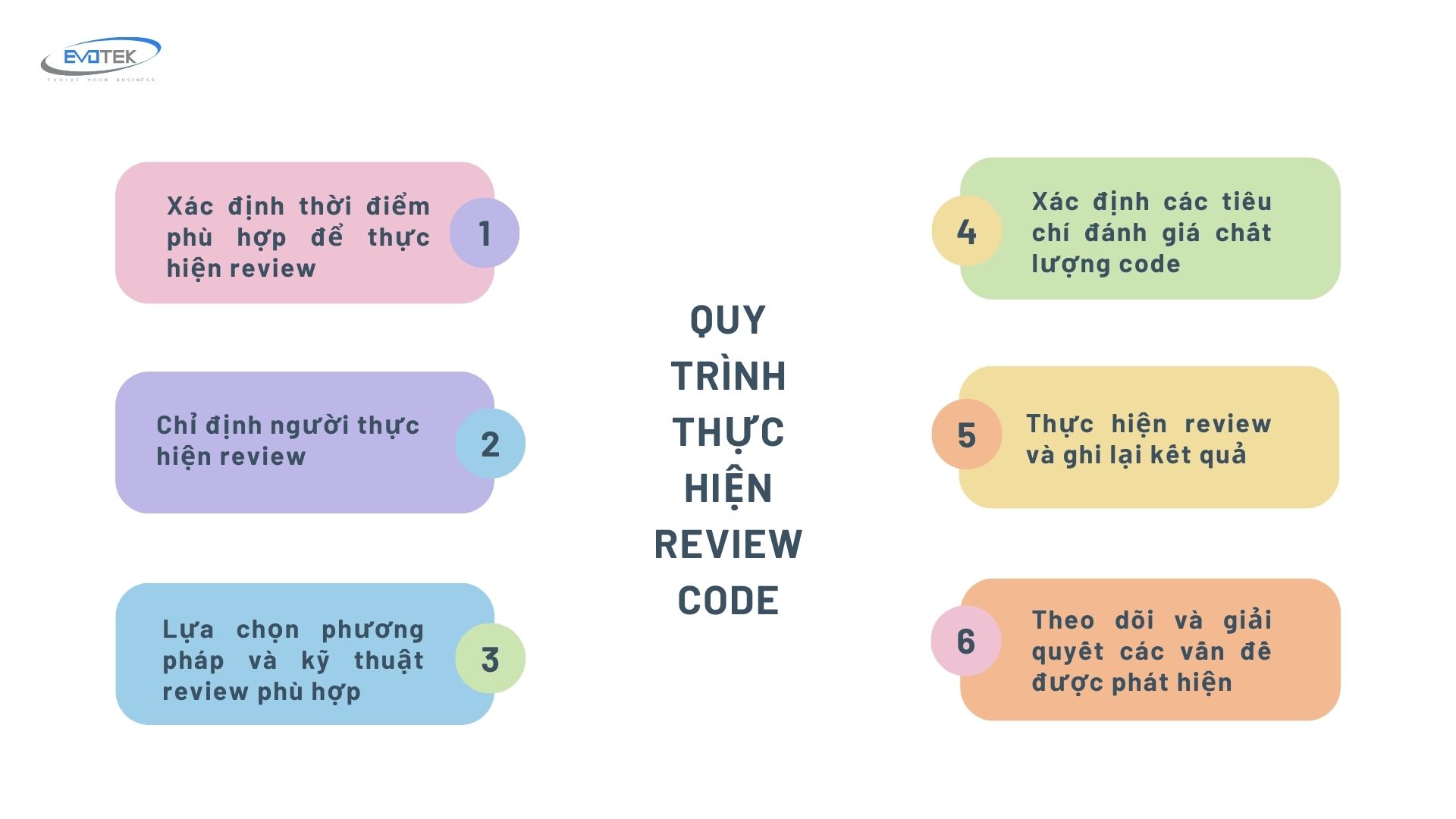In today’s world of software development, code quality plays a decisive role in the success of a product. According to a study by Standish Group, only 16.2% of software projects are completed on schedule and meet all requirements. The main cause of this is poor code quality, leading to many errors, performance issues and difficulty in maintenance and expansion. On the other hand, projects with high code quality often achieve success at a higher rate, up to 42%.
The importance of code review is undeniable. In fact, many software projects fail or encounter serious problems such as errors, security incidents, and poor performance due to the lack of a serious and effective code review process.
In this article, we will learn in detail about effective code review methods to improve code quality, helping to achieve success for software projects.
What is code review?
Code review, also known as source code inspection, is an important process in the software development cycle. This is the step where programmers test and evaluate each other’s code before putting it into the staging or production environment. This process helps detect and fix errors, ensuring code compliance with programming standards and best practices.
In code review, programmers will test each other’s code from many different angles such as logic, performance, security, maintainability and scalability. They will provide comments, criticism and suggest improvements to improve code quality. This process not only helps detect errors but is also an opportunity to share knowledge, learn from each other and ensure consistency in the codebase.
Code review can be done in many different methods such as pair review, group review, partial review or using support tools. Choosing the right method will help improve the efficiency of this process. Source code management tools, static code analysis, and code review platforms also play an important role in supporting effective code reviews.
Benefits of code review
Identify and fix errors early
Code reviews help detect bugs, logic errors, and other issues at the early stages of development. By identifying these issues before they go into production, code reviews save time, effort, and resources.

Improve code quality
Code reviews promote writing clean, maintainable, and efficient code. Reviewers can provide feedback on coding best practices, design patterns, and potential optimizations. Combining these suggestions, programmers can improve the overall quality of their code.
Increase collaboration and knowledge sharing
Code reviews foster a collaborative environment where team members can learn from each other. Reviewers can share their expertise, suggest alternative solutions, and provide valuable insights. This collaborative approach helps improve each programmer’s skills and knowledge and strengthens the team’s ability to work.
Maintain code standards and consistency
Code reviews ensure code standards and principles are followed consistently throughout the entire project. It helps identify deviations from established conventions and promotes adherence to methods from the outset. Consistent code and structure make the code base easier to understand, maintain, and debug, especially when multiple programmers are working on the same project.
Minimize risks and improve software quality
Thorough code reviews help reduce the occurrence of serious errors or vulnerabilities in the software. By identifying and resolving potential risks during the code review process, the development team can ensure the product delivered to customers is reliable and safe.
Programmers improve and learn continuously
Code reviews provide valuable opportunities for programmers to develop their skills and knowledge. They receive feedback from more experienced team members, can learn new techniques, new methods. This culture of continuous learning promotes professional development and encourages the team to grow and improve over time.
Stakeholders participate in code reviews
Code reviews involve a number of stakeholders, who play different roles in the process. Below are the key stakeholders typically involved in the code review process:

Programmers write code
The programmer is responsible for implementing functionality, following coding standards, and addressing any feedback received during the review process.
Develop team
The development team includes all individuals involved in the software development process, including programmers, testers, PMs, and other team members. All members are involved to ensure the code review process is integrated into the overall development process.
Leader/PM
Leader/PM is the person responsible for monitoring the progress and overall success of the project, has experience, guides and supervises the code review process. They ensure that code conforms to architectural standards, design patterns, and long-term project goals.
Quality assurance (QA) team and testers
The QA team and testers play an important role in code review, especially in ensuring the code meets functional and non-functional requirements. They participate as reviewers to verify that the code conforms to its intended functionality and testability.
Stakeholders/Customers
Depending on the project, stakeholders or customers may participate in the code review process to provide input on specific requirements. Their participation ensures that the code meets their expectations and is aligned with the project’s goals.
Code review methods
There are many different code review methods and approaches that development teams can apply based on their specific needs and requirements. Let’s explore some commonly used ones:
Pull Request (PR)
Review In Git-based version control systems like GitHub etc., programmers often create pull requests or merge requests to propose changes to the source code. These pull requests are evaluated by team members before being implemented.
Double programming
In pair programming, two programmers work together on the same computer, with one writing code while the other reviews that code in real time. This method encourages continuous communication and interaction between programmers, helping to detect and fix errors quickly. Pair programming is often applied in Agile software development and is considered one of the best practices in programming.
Review via email
In this method, source code changes are sent via email, and reviewers provide feedback and comments via email. The discussion took place on email threads. This method allows reviewers time to thoroughly analyze the code and provide detailed feedback. However, this method can lead to slow reviews and may not be better suited for agile projects.
Tool-assisted assessment
There are various tools and platforms to support source code reviews, such as GitHub, GitLab, Bitbucket, and specific source code review tools like Crucible and Review Board. These tools provide features such as code differentiation, comments, and automatic code analysis. Reviewers can add comments directly in the tool and coders can address the feedback accordingly.
Rating based on review list
Checklist-based reviews involve using predefined checklists or guidelines to evaluate code changes. The reviewer systematically goes through the checklist, ensuring that specific criteria such as code style, best practices, and performance considerations are met. This approach helps maintain consistency and ensures that important aspects are not overlooked during the review process.
Unofficial review
Developers can ask team members to quickly look over their code or discuss changes without a formal process. Reviewers provide real-time feedback and suggestions while observing code changes. This is an effective method for quick and immediate feedback, especially for small changes or when working at close range.
Official review
Formal code review (Formal Inspection) is a structured and rigorous code review method. It includes a detailed process with clearly defined specific roles and responsibilities.
Typically, this process includes the following steps:
- Programmers prepare source code and related documents.
- A dedicated inspection team, including managers, reviewers, auditors, and recorders.
- A formal review meeting takes place, where the source code is thoroughly reviewed according to a checklist.
- Problems and errors are recorded and classified.
- Programmers edit the source code based on feedback from testing.
- Additional rounds of testing may be conducted if necessary.
This method ensures the accuracy, consistency, and comprehensiveness of the source code review process. However, it also requires more resources and time than other source code review methods.
Continuous Integration/Continuous Evaluation
This approach integrates code review into the continuous integration/continuous deployment (CI/CD) process. Automated testing and code analysis tools are used to provide immediate feedback on code changes.
Code review process
To ensure the code review process is effective and consistent, a clear process needs to be established. This process will help identify the steps to take, assign roles and responsibilities, and ensure understanding and compliance by all team members. Here are some key steps in the code review process:

Step 1: Determine the appropriate time to perform the review
First, you need to determine the appropriate time to conduct a code review. This could be after completion of a new feature, after a specific development period, or on a recurring schedule.
Step 2: Appoint someone to conduct the review
Next, it is necessary to designate the people who will take on the code review role. This could include other programmers on the team, project managers, or code quality reviewers.
Step 3: Choose appropriate review methods and techniques
Based on the project scale, team skills and available resources, choose the appropriate code review method such as pair review, group review, section review or using support tools.
Step 4: Determine criteria for evaluating code quality
To ensure the review process is consistent and objective, code quality assessment criteria need to be clearly defined. This can include programming standards compliance, logic issues, performance, security, maintainability, and scalability.
Step 5: Perform review and record results
During the review process, it is necessary to evaluate the code based on the defined criteria and record the results in detail. Comments, criticisms, and suggestions for improvement should be archived and shared with the team.
Step 6: Monitor and resolve detected issues
After completing the review process, it is necessary to follow up and ensure that all identified issues are resolved satisfactorily. This may include fixing bugs, improving the source code, or applying necessary changes.
In Conclusion
Code review is an important step in the software development process, contributing to improving product quality and ensuring long-term stability. There are many different source code evaluation methods, each with its own advantages and disadvantages. Choosing the appropriate method depends on the project scale, working environment and specific requirements of the organization.
For outsourcing software development companies like Evotek , applying effective code review methods is extremely important. With a diverse staff working on a variety of projects, establishing a rigorous and consistent code review process is essential to ensure product and service quality. Evotek may consider applying methods such as Pull Request evaluation, pair programming, tool-assisted evaluation, or even formal testing for large and complex projects. That way, Evotek can make the most of its staff’s capabilities, improve work efficiency and enhance its reputation in the software outsourcing market.
